
The Risks & Rewards of Online Dog Training
By Sally Gutteridge | Posts , Training
 The internet has opened up the world to us in so many ways. People can work alongside work colleagues regardless of location. Social networking has become a huge part of our lives and enables us to stay in touch easily and effectively. We can have face to face phone calls with friends and family on the other side of the globe and obtain a university degree and other top level qualifications by distance learning.
The internet has opened up the world to us in so many ways. People can work alongside work colleagues regardless of location. Social networking has become a huge part of our lives and enables us to stay in touch easily and effectively. We can have face to face phone calls with friends and family on the other side of the globe and obtain a university degree and other top level qualifications by distance learning.
There is absolutely no reason why, as dog owners we cannot learn the basic theory of our dog and his behavior online. Practical online dog training advice can be a great success if delivered by a professional in a suitably understandable manner.
The Benefits
Learning how to train your dog with internet or in distance learning based stages is great. There are many benefits involved in taking part in this type of training program. Some of these are outlined below;
- Cost – Expert advice costs money and dog training advice is no different. An understanding of basic dog training can be learned by reading and gathering research from suitable websites or providers. By taking part in organized online dog training and canine behavior education you will get expert advice at a fraction of its normal cost.
- Positive observation -Because good online dog training guides are based on positive training techniques, a lot can be learned by watching exactly how the training is carried out via either a web link or DVD recording. For basic commands and teaching typically generic dog training methods
- Expert learning- There are plentiful dog trainers in the world but relatively few good and learned dog experts. By research and choosing a provider carefully you are enabling yourself to learn from a top class dog trainer or behaviorist. Such learning is regardless of location and usually at a fraction of the cost.
Choosing a provider
This is a vital ingredient in the success of any online dog training course. When choosing a dog trainer whether online or in person there are certain things that you should always ensure;
- Training type – Positive reward based dog training is crucial for online dog training. If you are teaching a dog anything at all it must be based in kindness and reward. Any provider of this service will strongly emphasize dog training techniques based in reward and enjoyment.
- Continuity – An entire training course from the same expert is a good idea. It can be difficult enough communicating with and training a dog. By entering into an online dog training course that covers understanding and progressive training you will be receiving expert advice during the entire training of your dog. By dipping into the work of various experts it could be easy to become confused and therefore baffle your learning dog.
- Included support – Many good experts that offer online dog training help also offer the opportunity for community support. This can be based on a regular blog site or forum access. A good dog trainer will also offer personalized online dog training support for any exceptionally difficult problems encountered. This can be in the form of either Email, ticketing support system or even a live online conversation option.
The risks
The risk of accepting that any dog trainer is an expert is immense. There are so many out of date dog training techniques. For the keen or even desperate dog owner the internet can be a very dangerous place. Video sharing sites are packed full of people trying to show us how to train our dogs. Anyone that has a good grip on positive dog training can become pretty distressed by watching some of the poor advice offered online.
Any online dog training video search will probably quickly bring you to some type of dominance based advice. Beware of this, it is not effective or kind dog training and can be dangerous. The “alpha roll” is one of the most popular methods advised by this type of trainer. The owner is advised to roll their dog on its back to establish dominance. Based on inaccurate dog behavior knowledge and on misconstrued wolf behavior this is an easy way to provoke a frightened dog to bite.
A good tip when watching any online dog training video is to turn the sound down and watch the dog. Without the commentators distracting voice you will be able to see whether the dog is happy or stressed. Look for calming signals and displacement behaviors such as yawning, scratching or excessive sniffing. These will all be clues to exactly how well the trainer is communicating with the dog.
Here at the Dog Trick Academy, with the help of our expert trainers, we offer a complete 8-week positive training (reward based) home-study training video course. It literally teaches everything from the basics to the more intricate training techniques, that will teach you everything you need to know about positive training. Click here to learn more.

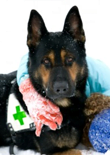
 The Search and rescue dog team is an invaluable resource. Often working on a voluntary basis, handlers train their dog to find people that are lost, injured or at risk.
The Search and rescue dog team is an invaluable resource. Often working on a voluntary basis, handlers train their dog to find people that are lost, injured or at risk.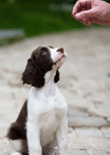
 Owning your first dog is an educational and enlightening experience. Each and every dog that you live with will teach you something new about the canine species.
Owning your first dog is an educational and enlightening experience. Each and every dog that you live with will teach you something new about the canine species.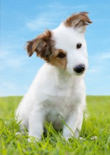
 Deciding to offer a home to a dog is a big decision. You’ll be committing yourself to taking care of an animal for the rest of its life. The needs of any dog must be met consistently to ensure that this decision to have a dog works out perfectly. Exercise, mental stimulation with positive reinforcement and health requirements all need to be taken into account when working out how to choose a dog with success.
Deciding to offer a home to a dog is a big decision. You’ll be committing yourself to taking care of an animal for the rest of its life. The needs of any dog must be met consistently to ensure that this decision to have a dog works out perfectly. Exercise, mental stimulation with positive reinforcement and health requirements all need to be taken into account when working out how to choose a dog with success.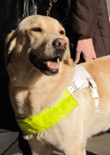
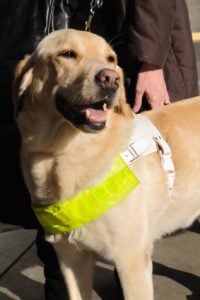 The Therapy dog is a concept that has changed the lives of countless people.
The Therapy dog is a concept that has changed the lives of countless people.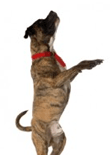
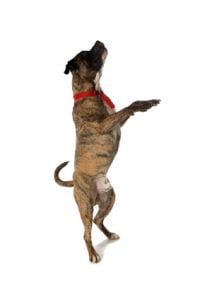 Bred initially for bull baiting and used more recently for underground dog fighting, the pitbull has suffered more than its share of both bad press and abuse at the hands of humanity.
Bred initially for bull baiting and used more recently for underground dog fighting, the pitbull has suffered more than its share of both bad press and abuse at the hands of humanity.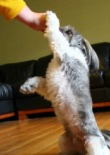
 So you are having a new family pet and like the look of the Shih Tzu. A toy breed dog of sturdy build and cheerful nature that will meet and exceed your expectations.
So you are having a new family pet and like the look of the Shih Tzu. A toy breed dog of sturdy build and cheerful nature that will meet and exceed your expectations.
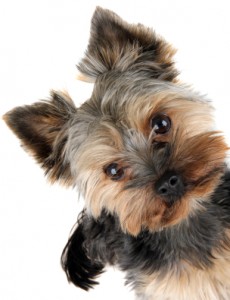 The Yorkshire terrier is a wonderful breed. Small in size and stature but large of heart and personality the Yorkie is a great little dog. There is something special about the shining eyes and button black nose of the Yorkie. When you have experienced this breed of dog for any length of time you will certainly be hooked. Many Yorkshire terrier owners have multiple dogs and consistently have at least one Yorkie in the household.
The Yorkshire terrier is a wonderful breed. Small in size and stature but large of heart and personality the Yorkie is a great little dog. There is something special about the shining eyes and button black nose of the Yorkie. When you have experienced this breed of dog for any length of time you will certainly be hooked. Many Yorkshire terrier owners have multiple dogs and consistently have at least one Yorkie in the household.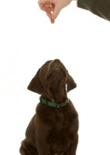
 The Labrador retriever is a simple dog. He asks very few questions and has much love to share around. He doesn’t have the high and often complicated intelligence of other working dog breeds. If, however, any dog breed had the capability for emotional intelligence the Labrador would be it.
The Labrador retriever is a simple dog. He asks very few questions and has much love to share around. He doesn’t have the high and often complicated intelligence of other working dog breeds. If, however, any dog breed had the capability for emotional intelligence the Labrador would be it.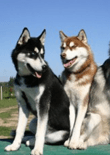
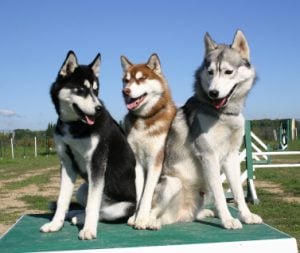 Beauty and brains unite in the Siberian husky. Bred to pull sleds for many miles in arctic conditions, this breed of dog is becoming increasingly popular as a family pet. With an appearance similar to that of the white wolf and great strength of body and mind the husky is a canine to be admired.
Beauty and brains unite in the Siberian husky. Bred to pull sleds for many miles in arctic conditions, this breed of dog is becoming increasingly popular as a family pet. With an appearance similar to that of the white wolf and great strength of body and mind the husky is a canine to be admired.